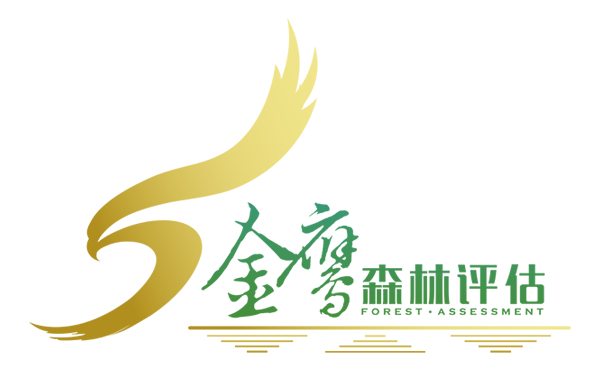发布:2025-11-20 浏览:0
、 自然资源资产核算体系建设是自然资源资产产权制度和管理制度的基础工作,解决的是“有多少、值多少”的家底盘点问题。深圳市聚焦存在的问题,探索构建一套货币化与非货币化相结合、分类与整体相结合、定量与定性相结合的自然资源资产评估核算体系。核算体系覆盖土地、森林、湿地、矿产、水、草地和海洋7类自然资源资产,包括经济价值核算、生态价值核算、社会价值核算三大核算系统,为自然资源资产价值实现夯实了基础。
The construction of a natural resource asset accounting system is the fundamental work of the property rights system and management system of natural resource assets, which solves the problem of inventory of "how much is there and how much is it worth". Shenzhen focuses on the existing problems and explores the construction of a natural resource asset evaluation and accounting system that combines monetization and non monetization, classification and overall, and quantitative and qualitative methods. The accounting system covers seven types of natural resource assets: land, forests, wetlands, minerals, water, grasslands, and oceans. It includes three major accounting systems: economic value accounting, ecological value accounting, and social value accounting, laying a solid foundation for realizing the value of natural resource assets.
1经济价值核算空间资源资产价值核算空间资源资产包括土地资源资产和海洋资源资产。其中,土地资源资产价值核算对象包括农用地、建设用地、储备土地、林地和湿地;海洋资源资产价值核算包括海域和无居民海岛。农用地经济价值采用基准地价成果进行核算,涉及国有耕地、国有园地、国有坑塘水面,能够覆盖农用地核算对象。具体方式是将农用地图层与相应的基准地价图层叠加,并充分考虑面积最大原则、临近原则,核算出农用地价值。建设用地价值核算主要是应用标定地价成果,首先将标定地价转换为宗地价格,再通过修正系数转换为具有个别特征的待估算地块的清查价格。图1 标定地价核算土地资产价格核算流程深圳市储备土地受形成时间早、征收主体多元等因素影响,具有成本数据收集困难、规划用途种类繁多等特点。因此,深圳市在核算储备土地时,暂时只核算规划用途为建设用地部分的经济价值,核算方法与建设用地价值核算一致。储备土地成本核算则是考虑储备土地从收储到出让全流程所产生的成本,重点将土地整备成本和管理成本作为成本核算数据基础,形成全市统一的单位面积成本价格。森林资源中的林地经济价值核算、湿地资源中红树林地经济价值核算的方法与农用地一致。草地资源经济价值按照“三区三线”规划分为三部分,其中,城镇开发边界范围内草地资源按照工业用地核算,生态红线范围内草地资源按照林地核算,其余草地资源则按照耕地核算。海洋资源经济价值只核算经营性且已取得海域使用权的海域,海洋保护区、保留区以外尚未取得海域使用权的已填成陆区域和尚未取得海域使用权的未填成陆海域,以及经营性已取得无居民海岛使用权海岛和尚未确权的可开发利用无居民海岛资源资产经济价值。对于公益性用海用岛、特殊用海用岛、海洋保护区、保留区及未确权未纳入可开发利用的无居民海岛资源资产暂时只清查实物量,未核算经济价值。物质资源资产经济价值核算森林资源物质资产包括林木、林果和古树名木。目前林木资源资产核算经过多年的市场验证已经形成了一套较为完善的核算方法。深圳市根据林种、林龄、树种等因素选取不同的经济价值估算方法,其中,对幼龄林的林木资产采用重置成本法,对中龄林和近熟林的林木资产采用收获现值法,对成熟林、过熟林采用市场价倒算法,对竹林、果林的林木资产采用年均收益现值法。根据深圳市地方标准《陆域自然资源资产核算技术规范》,林果产品采用年均收益现值法。古树名木的价值核算以深圳市古树名木普查数据为基础,核算每棵古树名木的货币化价值,并运用深圳实际案例进行校正,分区域、分类型、分管理主体对古树名木经济价值进行统计分析。水资源资产经济价值只核算水体的经济价值,水体对应的陆地则在空间资源中核算。在统计水资源量时,水资源可分为地表水和地下水,并根据相应的水价进行核算。由于深圳市矿产资源已经全面停止开发,无法获取矿业权经营测算基础数据和技术资料,不满足净现值法的测算要求,因此,深圳市主要采用矿业权出让市场基准价修正法,再根据可采储量计算出相关矿产的资产价值。
1. Economic value accounting: Spatial resource asset value accounting: Spatial resource assets include land resource assets and marine resource assets. Among them, the accounting objects of land resource asset value include agricultural land, construction land, reserve land, forest land, and wetlands; The valuation of marine resource assets includes sea areas and uninhabited islands. The economic value of agricultural land is calculated using benchmark land price results, involving state-owned cultivated land, state-owned gardens, and state-owned ponds and ponds, which can cover the accounting objects of agricultural land. The specific method is to overlay the agricultural map layer with the corresponding benchmark land price layer, and fully consider the principles of maximum area and proximity to calculate the value of agricultural land. The value accounting of construction land mainly applies the results of calibrated land prices. Firstly, the calibrated land price is converted into the price of the land parcel, and then converted into the inventory price of the estimated land parcel with individual characteristics through a correction coefficient. Figure 1 Calibration of Land Price Accounting Process for Land Asset Price Accounting Shenzhen's reserve land is affected by factors such as early formation time and multiple expropriation entities, making it difficult to collect cost data and having a wide variety of planned uses. Therefore, when calculating the reserve land in Shenzhen, only the economic value of the planned use as construction land is temporarily accounted for, and the accounting method is consistent with the value accounting of construction land. The cost accounting of reserved land considers the costs incurred throughout the entire process of land acquisition and transfer, with a focus on land preparation and management costs as the basis for cost accounting data, forming a unified unit area cost price for the whole city. The methods for calculating the economic value of forest land in forest resources and mangrove forest land in wetland resources are consistent with those for agricultural land. The economic value of grassland resources is divided into three parts according to the "Three Zones and Three Lines" plan. Among them, grassland resources within the urban development boundary are accounted for as industrial land, grassland resources within the ecological red line are accounted for as forest land, and the remaining grassland resources are accounted for as cultivated land. The economic value of marine resources only accounts for the economic value of operational and acquired sea areas, land filled areas outside marine protected areas and reserves that have not yet obtained sea area use rights, and land filled sea areas that have not yet obtained sea area use rights, as well as operational islands that have obtained uninhabited island use rights and the economic value of exploitable uninhabited island resource assets that have not yet been confirmed. For public welfare sea islands, special sea islands, marine protected areas, reserved areas, and uninhabited island resource assets that have not been confirmed and included in the exploitable use, only the physical quantity is temporarily checked, and the economic value is not accounted for. The economic value accounting of material resource assets includes forest trees, fruits, and ancient and famous trees. At present, the accounting of forest resource assets has formed a relatively complete set of accounting methods after years of market verification. Shenzhen city selects different economic value estimation methods based on factors such as forest species, forest age, and tree species. Among them, the reset cost method is used for the forest assets of young forests, the present value of harvest method is used for the forest assets of middle-aged and nearly mature forests, the market value inversion algorithm is used for mature and over mature forests, and the annual average present value method is used for the forest assets of bamboo forests and fruit forests. According to the local standard "Technical Specification for Land Natural Resource Asset Accounting" in Shenzhen, the annual average present value method is used for forest and fruit products. The value accounting of ancient and famous trees is based on the census data of ancient and famous trees in Shenzhen. The monetary value of each ancient and famous tree is calculated and corrected using actual cases in Shenzhen. The economic value of ancient and famous trees is statistically analyzed by region, type, and management entity. The economic value of water resources assets only accounts for the economic value of water bodies, while the land corresponding to water bodies is accounted for in spatial resources. When calculating the amount of water resources, they can be divided into surface water and groundwater, and calculated based on the corresponding water prices. Due to the complete cessation of mineral resources development in Shenzhen, it is impossible to obtain basic data and technical information for mining rights operation calculation, which does not meet the calculation requirements of the net present value method. Therefore, Shenzhen mainly adopts the mining rights transfer market benchmark price correction method, and calculates the asset value of relevant minerals based on recoverable reserves.
2生态价值核算主要生态价值核算方法分析目前,生态价值核算方法主要当量因子法、功能价值法和能值法。(1)当量因子法:核心是通过以往研究和专家评估的方法确定单位面积生态价值,然后再根据总面积核算区域生态价值,其优点是操作简单,缺点是精度较低。(2)功能价值法:核心是通过实验或模型计算生态系统功能实物量,再通过替代工程法等方法核算其价值量,优点在于核算精度高,缺点在于参数复杂,技术壁垒高,价值类型单一,难以指导自然资源管理。(3)能值法:从输入生态系统的各种能量的角度(供给者角度)出发对生态系统服务进行评估,该方法考虑到不同形式的能源、材料、人类劳动和经济服务,为探索环境与经济的可持续互动提供更大的潜力,但目前该方法主要运用于科研领域,实际管理中运用较少。总体来看,当前自然资源资产生态价值核算尚无统一的评估核算体系和标准。同时,生态价值的市场属性还没有完全显化,大部分生态系统服务,比如水源涵养、调节气候等,都是“无形”的,既没有交易市场,也没有交易价格。为了使生态价值核算能够反映长期变化趋势,注重综合生态效益,并兼顾反映多种价值类型和易操作、可复制、可推广等特点,深圳市以生态系统质量作为评价目标,提出基于“自然基点”的生态价值核算体系。该核算体系主要采用自然资源日常管理数据,以及无量纲的核算结果和多样化的货币化方法,不仅大大降低了数据采集成本,而且能够适用于多样化的自然资源管理场景。基于“自然基点”的生态价值核算方法一是划分自然分区。在借鉴黄秉维院士主持的“中国综合自然区划”和郑度院士主持的“中国生态地理区域划分”项目成果的基础上,综合考虑气候、地质、地貌、植被类型、土壤类型等因素,在全国尺度上划分自然分区,使得分区内部一致性和外部差异性最大化。二是自然基点参数选取。对每类资源选取最关键、最具代表性的核算指标,用以整体反映该类资源的核心生态功能,其中森林资源生态价值核算参数选取应符合《森林生态系统服务功能评估规范》(GB/T 38582—2020)的规定,湿地生态价值核算参数选取应符合《湿地生态系统服务评估规范》(LY/T 2899—2017)的规定。三是自然基点参数标准化。连续性定量参数采用极差标准化方法将自然属性参数值标准化至[0,100],非连续性定量参数和定性参数主要采用专家打分法标准化至[0,100]。四是自然基点参数权重确定。采用专家打分法确定参数权重,并应用敏感性因子分析法对权重进行验证。五是自然基点计算。通过对比核算对象在本资源内部生态质量的相对优劣,将标准化的参数通过加权求和,得到一级自然基点,实现资源内部生态价值可比,再通过综合修正计算得到二级自然基点,实现不同资源间生态价值可比。六是自然基点的货币化。一级自然基点和二级自然基点均可货币化,基于核算目标设置标准样地的精度和数量,选取具有代表性的标准样地并核算其货币化价值,进而推算修正其他任意地块的货币化价值。根据自然资源管理实际与应用场景不同,采用差异化的具体货币化方法,如自然资源资产损害赔偿可以考虑采用重置成本法,生态修复成效评估可考虑采用功能价格法。图2 基于“自然基点”的生态价值核算体系生态价值整体核算方法针对相对独立的生态系统或具有明确边界的管理单元(如国家公园),重点考虑其自然禀赋条件、区域发展和市场需求等价值影响因素,以及多资源综合核算的必要性,衔接现行核算体系和统计指标,基于实践需要提出“整体核算”概念,兼顾核算成本、精度和效率,以此体现复合生态系统的整体生态价值。复合生态系统的整体生态价值与三方面要素有关:一是与资源的组合相关,如湿地对于其他生态系统的水源供给具有较强的正向促进作用,而水是生态系统存在的最重要的核心要素之一,因此湿地具有较强的利他作用,湿地在复合生态系统中,可以发挥复合生态系统的整体效益,而耕地(如旱地)相对于湿地来说,其利他作用则相对较弱,因此复合生态系统的整体生态效益与其生态系统类型的组合具有较强的相关性。二是与复合生态系统各资源面积占比有较强的相关性,如在湿地与耕地面积的比例方面,如果湿地占比仅1%,那么也较难发挥湿地水源供给的生态系统服务作用,因此其生态综合效应较低。三是与复合生态系统的景观格局有较强的相关性,例如,同样是100亩的森林,若是散落在各地,那么生态功能将受到较大的限制,难以起到物种保育等整体生态作用。复合生态系统的生态价值整体核算就是在基于“自然基点”的生态价值核算基础上,从资源组合、资源面积配比、资源景观格局三个角度采用专家打分法,确定三项因子对复合生态系统的影响,进而核算复合生态系统的整体生态价值。
Currently, the main methods for ecological value accounting are equivalent factor method, functional value method, and energy value method. (1) Equivalent factor method: The core is to determine the ecological value per unit area through previous research and expert evaluation methods, and then calculate the regional ecological value based on the total area. Its advantage is simple operation, but its disadvantage is low accuracy. (2) Functional value method: The core is to calculate the physical quantity of ecosystem functions through experiments or models, and then calculate their value through alternative engineering methods. The advantage is high accounting accuracy, but the disadvantage is complex parameters, high technical barriers, single value types, and difficulty in guiding natural resource management. (3) Energy value method: evaluates ecosystem services from the perspective of various energy inputs into the ecosystem (supplier perspective). This method considers different forms of energy, materials, human labor, and economic services, providing greater potential for exploring sustainable interactions between the environment and the economy. However, currently this method is mainly used in scientific research and is less commonly used in practical management. Overall, there is currently no unified evaluation and accounting system and standards for the ecological value of natural resource assets. At the same time, the market attributes of ecological value have not been fully manifested, and most ecosystem services, such as water conservation and climate regulation, are "intangible" without trading markets or prices. In order to enable ecological value accounting to reflect long-term trends, focus on comprehensive ecological benefits, and take into account the characteristics of reflecting multiple value types and being easy to operate, replicable, and promotable, Shenzhen city takes ecosystem quality as the evaluation objective and proposes an ecological value accounting system based on "natural basis". This accounting system mainly adopts daily management data of natural resources, as well as dimensionless accounting results and diversified monetization methods, which not only greatly reduces the cost of data collection, but also can be applied to diverse natural resource management scenarios. The first method of ecological value accounting based on "natural basis" is to divide natural zones. Based on the achievements of the "China Comprehensive Natural Zoning" project led by Academician Huang Bingwei and the "China Ecological Geography Regional Division" project led by Academician Zheng Du, and taking into account factors such as climate, geology, topography, vegetation types, and soil types, natural zoning is divided at the national scale to maximize internal consistency and external differences. The second is the selection of natural base point parameters. For each type of resource, select the most critical and representative accounting indicators to reflect the core ecological functions of the resource as a whole. The selection of parameters for forest resource ecological value accounting should comply with the provisions of the "Evaluation Specification for Forest Ecosystem Services" (GB/T 38582-2020), and the selection of parameters for wetland ecological value accounting should comply with the provisions of the "Evaluation Specification for Wetland Ecosystem Services" (LY/T 2899-2017). The third is the standardization of natural baseline parameters. The continuous quantitative parameters are standardized to [0100] using the range normalization method, while the non continuous quantitative and qualitative parameters are mainly standardized to [0100] using the expert scoring method. The fourth is the determination of the weight of natural base point parameters. Expert scoring method is used to determine parameter weights, and sensitivity factor analysis is applied to validate the weights. The fifth is the calculation of natural basis points. By comparing the relative advantages and disadvantages of the ecological quality of the accounting object within this resource, the standardized parameters are weighted and summed to obtain the first level natural base point, achieving comparability of the ecological value within the resource. Then, through comprehensive correction calculation, the second level natural base point is obtained, achieving comparability of ecological value between different resources. Six is the monetization of natural basis points. Both primary and secondary natural base points can be monetized. Based on the accuracy and quantity of standard plots set for accounting objectives, representative standard plots are selected and their monetized value is calculated, and then the monetized value of any other plot is calculated and corrected. According to the different practical and application scenarios of natural resource management, differentiated specific monetization methods can be adopted. For example, the replacement cost method can be considered for compensation of natural resource asset damage, and the functional price method can be considered for evaluation of ecological restoration effectiveness. Figure 2 shows the ecological value accounting system based on the "natural basis". The overall ecological value accounting method focuses on relatively independent ecosystems or management units with clear boundaries (such as national parks), with a focus on their natural endowment conditions, regional development, and market demand, as well as the necessity of multi resource comprehensive accounting. It connects the current accounting system and statistical indicators, and proposes the concept of "overall accounting" based on practical needs, taking into account accounting costs, accuracy, and efficiency, in order to reflect the overall ecological value of composite ecosystems. The overall ecological value of a composite ecosystem is related to three factors: firstly, it is related to the combination of resources. For example, wetlands have a strong positive promoting effect on the water supply of other ecosystems, and water is one of the most important core elements of the ecosystem. Therefore, wetlands have a strong altruistic effect. Wetlands can play an overall role in the composite ecosystem, while cultivated land (such as dry land) has a relatively weak altruistic effect compared to wetlands. Therefore, the overall ecological benefits of a composite ecosystem are strongly correlated with the combination of its ecosystem types. Secondly, there is a strong correlation with the proportion of various resource areas in the composite ecosystem. For example, in terms of the ratio of wetland to cultivated land area, if the proportion of wetlands is only 1%, it is also difficult to play the role of wetland water supply in ecosystem services, so its ecological comprehensive effect is relatively low. Thirdly, there is a strong correlation with the landscape pattern of composite ecosystems. For example, if a 100 acre forest is scattered in various places, its ecological functions will be greatly limited, making it difficult to achieve overall ecological functions such as species conservation. The overall accounting of the ecological value of a composite ecosystem is based on the "natural basis" of ecological value accounting, using expert scoring method from the perspectives of resource combination, resource area ratio, and resource landscape pattern to determine the impact of three factors on the composite ecosystem, and then calculate the overall ecological value of the composite ecosystem.
3社会价值核算社会价值是指人类可以通过自然资源获取的有利于个人心灵、社会健康运行的价值,关注的是社会大众感知、态度、偏好和价值观,重点在于保障人类福祉,以及有助于提高规划、政策的社会关联性。基于社会价值评价结果,可识别哪些区域是高价值、高偏好区域,从而确定保护区域的优先等级,也有助于减少规划和项目可能造成的矛盾冲突。根据社会价值的界定来看,自然资源资产的社会价值主要是指生态系统的社会价值。因此,全面核算生态系统的社会价值,可认识到人们的感知与生态环境、景观之间关系的复杂性,有助于灵活地对生态系统进行适应性管理,提高管理效能。现阶段,社会价值主要包括生态旅游、钓鱼运动、美学、艺术教育、精神启示和科学价值等方面。从环境经济学角度看,生态系统的社会价值中的非物质价值及其产生的社会福利均具有经济属性,可以通过经济评估方法来衡量,特别是消遣娱乐这类容易通过市场价值体现的,是社会价值中最容易货币化的。同时,社会价值中还存在其他因未进入市场而无法准确衡量其价值的方面,如社会关注度、美学价值等,对这些难以进行货币化的,一般通过非经济价值评估方法来评估。因此,在深圳市自然资源资产社会价值核算探索实践中,社会价值表达主要采用定性与定量相结合的方式,以自然保护地作为核算基本单元,考虑指标典型性和数据的可获得性、持续性,选择“休闲游憩”为定量核算指标,应用手机信令大数据和机会成本法进行货币化核算。另外,基于已有的管理数据,选择“科研教育、历史文化、宣传示范”为定性核算指标,采用基于层次分析的专家打分法进行定性表达。
Social value accounting refers to the value that humans can obtain through natural resources that is beneficial to their personal mental and social health. It focuses on the perception, attitudes, preferences, and values of the general public, with a focus on ensuring human well-being and helping to improve the social relevance of planning and policies. Based on the results of social value evaluation, it is possible to identify which areas are high-value and high preference areas, thereby determining the priority level of protected areas, and also helping to reduce potential conflicts between planning and projects. According to the definition of social value, the social value of natural resource assets mainly refers to the social value of ecosystems. Therefore, a comprehensive accounting of the social value of ecosystems can recognize the complexity of the relationship between people's perception, ecological environment, and landscape, which helps to flexibly manage ecosystems and improve management efficiency. At present, social value mainly includes aspects such as ecotourism, fishing, aesthetics, art education, spiritual inspiration, and scientific value. From the perspective of environmental economics, the non-material value and social welfare generated by ecosystems have economic attributes that can be measured through economic evaluation methods, especially leisure and entertainment, which are easily reflected in market value and are the most easily monetized social values. At the same time, there are other aspects of social value that cannot be accurately measured due to not entering the market, such as social attention, aesthetic value, etc. These are difficult to monetize and are generally evaluated through non economic value assessment methods. Therefore, in the exploration and practice of social value accounting of natural resource assets in Shenzhen, the expression of social value mainly adopts a combination of qualitative and quantitative methods, taking nature reserves as the basic accounting unit, considering the typicality of indicators and the availability and sustainability of data, selecting "leisure and recreation" as the quantitative accounting indicator, and applying mobile signaling big data and opportunity cost method for monetary accounting. In addition, based on existing management data, "scientific research and education, historical culture, and propaganda demonstration" are selected as qualitative accounting indicators, and the expert scoring method based on Analytic Hierarchy Process is used for qualitative expression.
本文由 林业资产价格评估 友情奉献.更多有关的知识请点击 http://www.jyslpg.com/ 真诚的态度.为您提供为全面的服务.更多有关的知识我们将会陆续向大家奉献.敬请期待.
This article is dedicated to the evaluation of forestry asset prices For more related knowledge, please click http://www.jyslpg.com/ Sincere attitude To provide you with comprehensive services We will gradually contribute more relevant knowledge to everyone Coming soon.



















